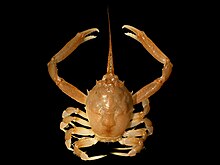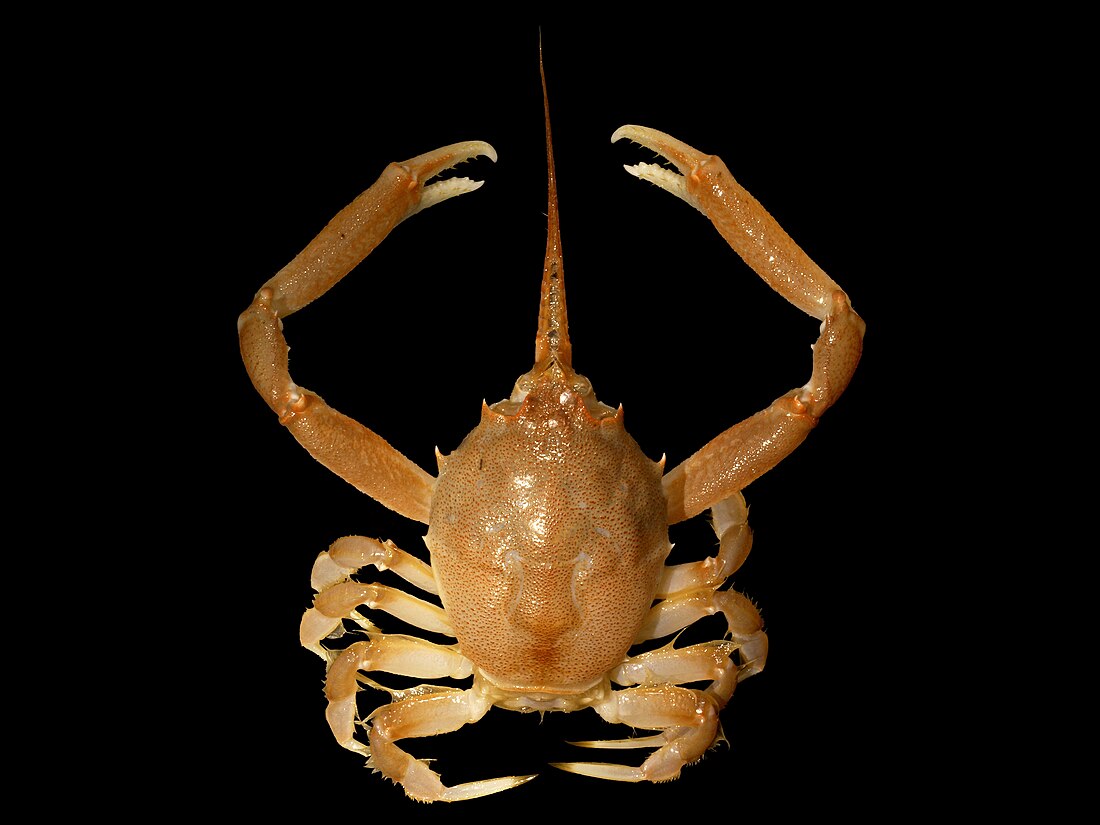Corystes cassivelaunus, the masked crab, helmet crab or sand crab,[1] is a burrowing crab of the North Atlantic and North Sea from Portugal to Norway, which also occurs in the Mediterranean Sea.[2] It may grow up to 4 centimetres or 1.6 inches long (carapace length).[1] The name "masked crab" derives from the patterns on the carapace which resemble a human face (a case of pareidolia), in a similar manner to heikegani.[3] It is the only species in the genus Corystes.[4]
| Corystes cassivelaunus | |
|---|---|
 | |
| A male C. cassivelaunus | |
| Scientific classification | |
| Domain: | Eukaryota |
| Kingdom: | Animalia |
| Phylum: | Arthropoda |
| Class: | Malacostraca |
| Order: | Decapoda |
| Suborder: | Pleocyemata |
| Infraorder: | Brachyura |
| Family: | Corystidae |
| Genus: | Corystes Bosc, 1802 |
| Species: | C. cassivelaunus |
| Binomial name | |
| Corystes cassivelaunus (Pennant, 1777) | |
| Synonyms | |
C. cassivelaunus lives buried in sandy substrates, where it feeds on the infaunal invertebrates such as polychaete worms and bivalve molluscs.[1] It uses its two antennae to form a breathing tube that allows oxygenated water down into the substrate.[5][6] The chelipeds of males are much longer than the body, while those of females are only about as long as the carapace.[7]
References
Wikiwand in your browser!
Seamless Wikipedia browsing. On steroids.
Every time you click a link to Wikipedia, Wiktionary or Wikiquote in your browser's search results, it will show the modern Wikiwand interface.
Wikiwand extension is a five stars, simple, with minimum permission required to keep your browsing private, safe and transparent.

